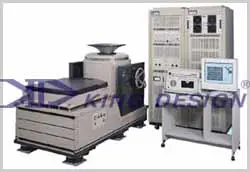High-frequency vibration test
Accredited range |
Optimum range |
|
Vibration diagnosis |
Frequency: 3~2000 Hz, displacement: 0~25 mm (pack-pack), and acceleration 0~50 g peak | Frequency: 1~4000 Hz, displacement: 0~50 mm (pack-pack), and acceleration 0~60 g peak |
Vibration test |
Frequency: 10~2000 Hz, displacement: 0~25 mm (pack-pack), and acceleration 0~50 g peak | Frequency: 1~4000 Hz, displacement: 0~50 mm (pack-pack), and acceleration 0~60 g peak |
Vibration measurement |
Frequency: 3~4000 Hz, displacement: 0~50 mm (pack-pack), and acceleration 0~100 g peak | Frequency: 1~4000 Hz, displacement: 0~50 mm (pack-pack), and acceleration 0~100 g peak |
  |
|||
‧ What is the vibration test? The vibration test is to simulate the varied vibration environment encountered during the manufacturing, assembling, transporting and application stage of products, applied to certify the capacity of products in withstanding the environmental vibration. The vibration can be divided to the free vibration and forced vibration. The free vibration is a system under no any external force exerted to it and it vibrates at one or multiple natural frequencies. The natural frequency is the dynamic character of a system that counts on system mass and stiffness; and the forced vibration is occurred under certain external forced exerted to the system. Most structures would make certain level of vibration while external force is exerting on it, therefore we must carefully consider the vibration behavior while making engineering design task. |
|||
‧ What is the benefit of making vibration test? The main purpose of perform vibration test is to display out the potential flaw hidden in a product; let the flawless products pass through the screen process and the flawed products appear in earlier stage to repair of remove them in order to promote the reliability of products. This test model also can be applied to analyze the integrity of specimen and/or study its dynamic character. |
|||


